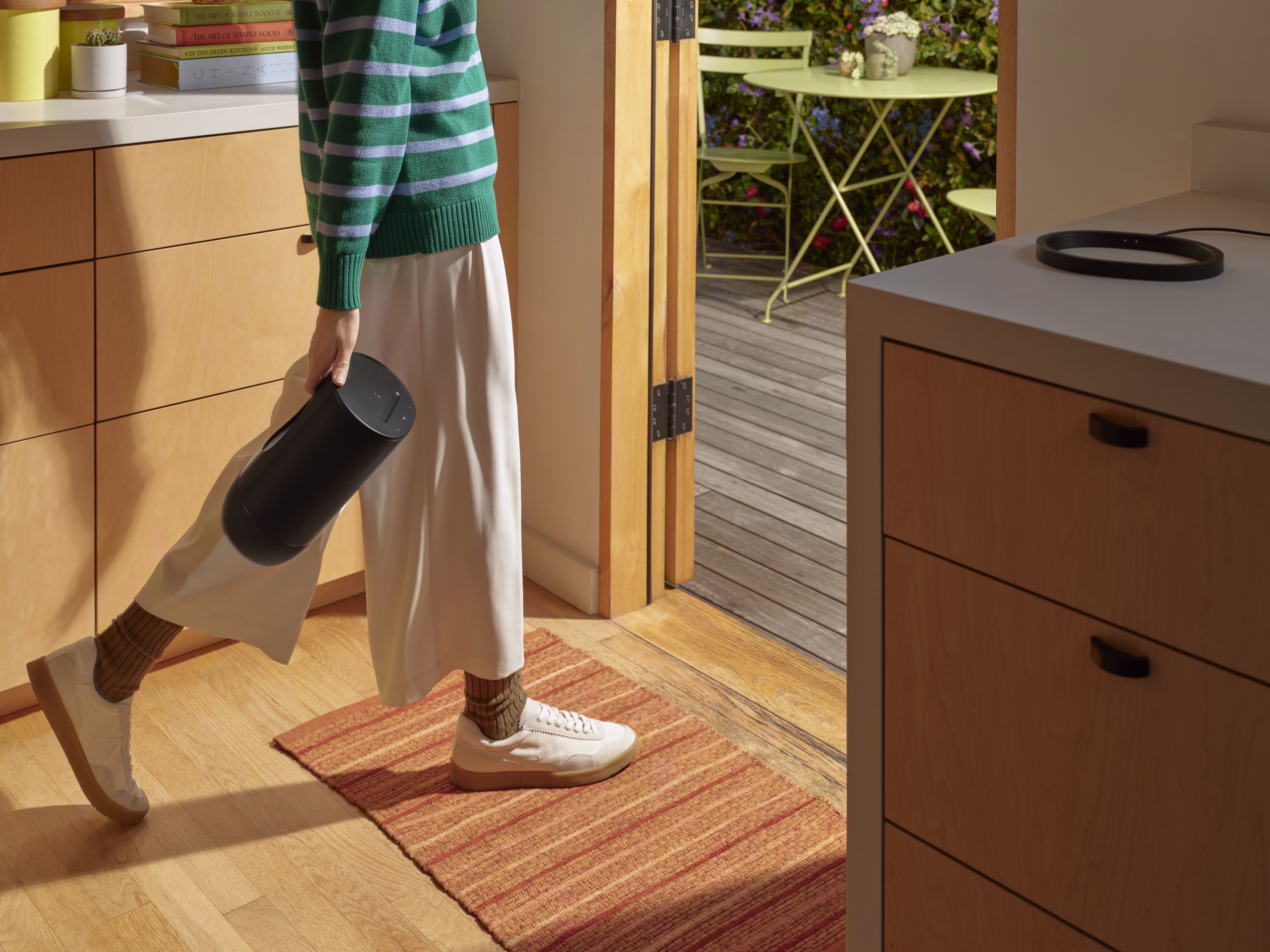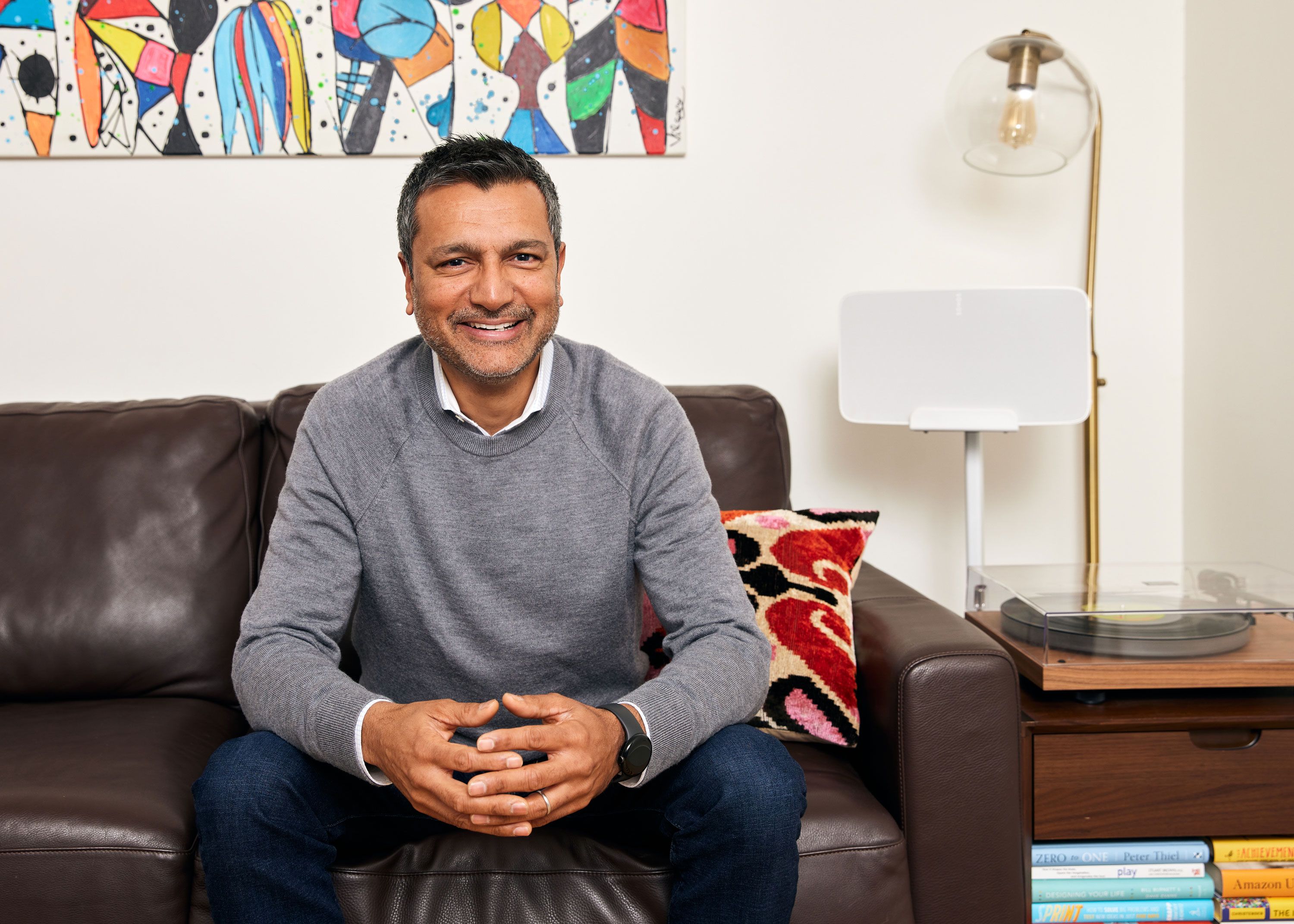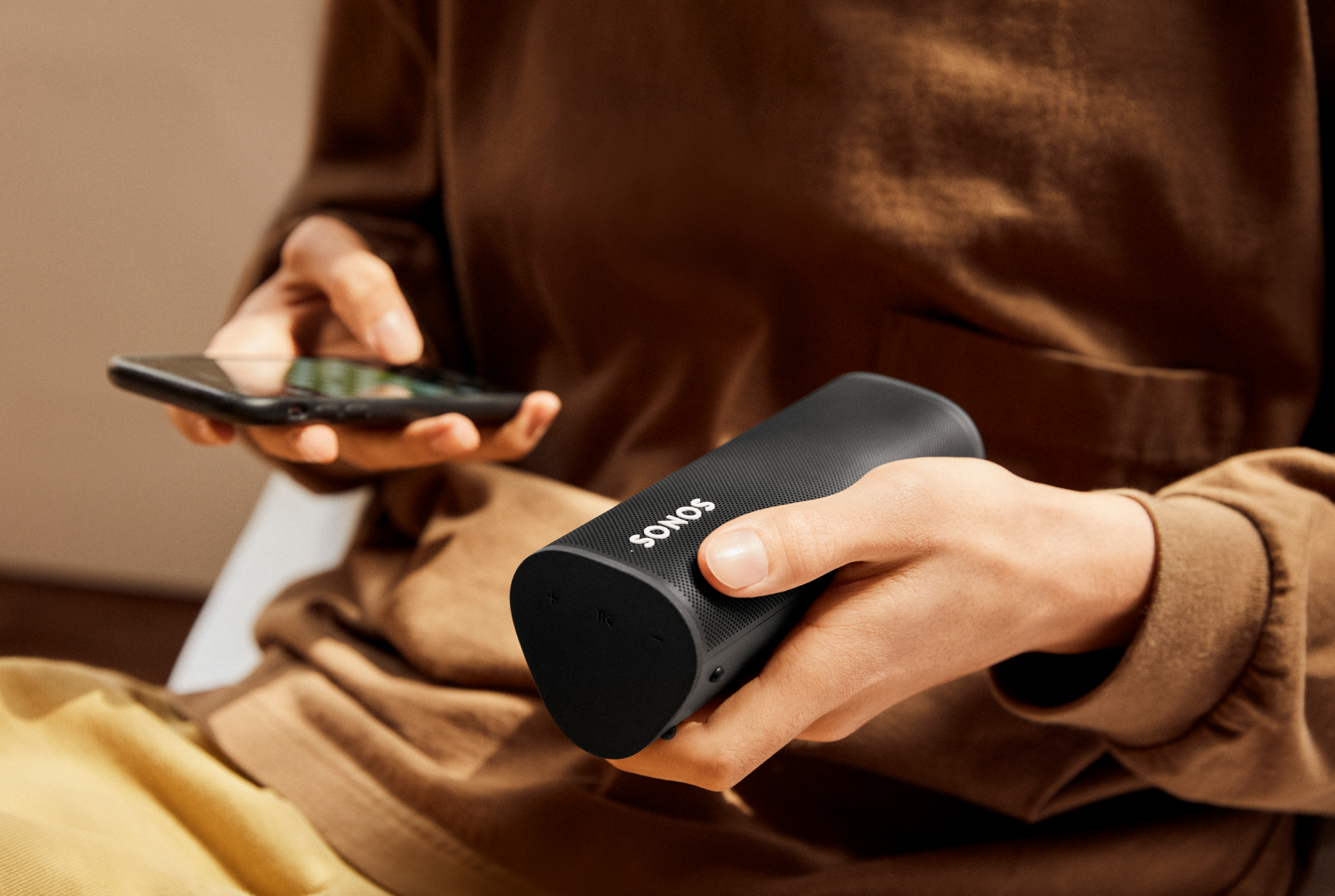How Sonos elevates the listener experience with Sierra.
Discover how Sonos is supercharging support and accelerating a customer's "time-to-music"
Customers
15 Million

A bold vision for the future of sound
Sonos was founded in 2002 with a mission to fill every home with music. After breakthrough research, prototyping, and rigorous testing, Sonos shipped its first revolutionary product in 2005, the ZP100. This was the first wireless audio product of its kind, with reviewers celebrating its simplicity of setup, design, reliability, and great sound. Over the course of the next two decades, Sonos has gone on to become a leader in sound experience with devices in more than 15 million homes all over the world.
Naturally, Sonos has deep roots in technical excellence and product innovation. But, Sonos’ commitment to its 15 million customers has stretched beyond delivering groundbreaking products to delivering world-class listening experiences.
The Sonos focus on customer experience is central to all business functions. Dharam Rai, VP of Customer Experience at Sonos explains, “At many companies, customer support is a post-purchase function, measured as a cost center. At Sonos, customer support and serviceability are considered in every part of the planning and development process, from product development to go-to-market to loyalty.”
Accelerating time-to-music
The true value of a Sonos speaker can only be appreciated when customers begin listening to their first song. To measure this, the company introduced a cross-functional metric called “time-to-music,” which captures all aspects of the customer experience, from order management to product usability and customer support.
To accelerate time-to-music, Sonos launched the F30 programs, designed to help customers accelerate during the first 30 days of their customer journey. “The team rallies to onboard customers and deliver an incredible new product experience,” says Dharam. “That first experience will shape the customer’s long-term relationship with our brand.”
As a part of this process, the Customer Experience team answers questions, helps with speaker setup, and troubleshoots issues across the entire wireless ecosystem, from network topology to accessing an IP address. “If we get messages from customers who need help fixing their router issues, we do whatever it takes to solve the problem,” says Dharam. “We have received thank-you notes from customers who love their new Sonos speaker, and are also grateful that their old printer finally works!”

“The team rallies to onboard customers and deliver an incredible new product experience. That first experience will shape the customer’s long-term relationship with our brand.”
VP of Customer Experience, Sonos
Introducing the Customer Effort Score
Most customer experience organizations have a standardized set of metrics to evaluate operational performance, including average handle time, time-to-resolution, net promoter score (NPS), and customer satisfaction (CSAT). At Sonos, these interaction-based metrics were only one piece of the puzzle. In addition to “time-to-music,” Dharam wanted to measure how the customer experience team could create longer, stronger relationships.
Dharam’s team began connecting the varied, rich data from across the organization to understand customer sentiment, leading to the development of the Customer Effort Score. “The Customer Effort Score evaluates the customer experience beyond a one-time interaction, helping us understand the broader customer relationship,” explains Dharam.
Data points that are incorporated include the frequency, count and range of customer inquiries, measured alongside product usage and log data. “Did the customer call twice about the same problem? How many interactions have we had this month?” Dharam explains, “The Customer Effort Score allows us to be proactive with each conversation and tailor responses appropriately.”
Aligning AI with customer-obsession
Dharam and his team are always working to improve the customer experience. In late 2022, they began investigating alternative approaches to customer self-service beyond traditional chatbots, “Bots have a bad reputation in the industry –– for good reason. Bots are transactional. They’re ‘what if’ statements that feel static and lack empathy.”
As AI became a talking point in boardrooms and at dinner tables, Dharam considered how AI could be deployed for customer-facing interactions, improving the first 30 days and improving the Customer Effort Score. When he first saw what was possible with Sierra, he was impressed. “Sierra’s AI agent was able to deliver a humanness to conversations that was surprising,” shares Dharam. “The AI was able to thread together an entire conversation, understanding the context and relevance past comments. This has a humongous value in terms of reducing customer effort and creating a better experience.”
Building the first Sonos AI agent
The Sonos AI agent is designed to help with a variety of first-30 day tasks. Sonos started with the simpler tasks, and quickly expanded to include setup of new products, solving for moved routers, managing orders and returns, and connecting with new music services. Each of these is multi-dimensional and nuanced. A well-trained customer experience representative can make these interactions seamless and easy for the customer, and Sierra was held to the same high standard.
For example, to set up a new product, the AI agent begins by asking the customer about the product and environment, and then collects basic diagnostic information. While a customer experience representative would have to swivel-chair between various systems, manuals and programs, the AI agent can instantly access relevant data. After the AI agent guides the customer through a product setup and confirms the customer is satisfied, the agent creates a case in Salesforce.
When cases do need in-person support, the AI agent escalates to customer experience representatives with a summary of the issue, complete with relevant information. Managing a lighter caseload with better information, customer experience representatives can solve issues more quickly, effectively, and with less burnout.
Throughout the development of the Sonos AI agent, the team found the AI to be dynamic, creative, and capable of meeting the expectations of a Sonos-quality customer experience. They are optimistic that the AI agent will help Sonos scale customer success while helping customers enjoy their Sonos products. “‘Time-to-music’ is a really important metric for us,'' says Dharam, “and we want to ensure that the journey from purchase to first listen is as seamless as possible.”

“The AI was able to thread together an entire conversation, remembering the context and relevance of past comments. This has a humongous value in terms of reducing customer effort and creating a better experience.”
VP of Customer Experience, Sonos





